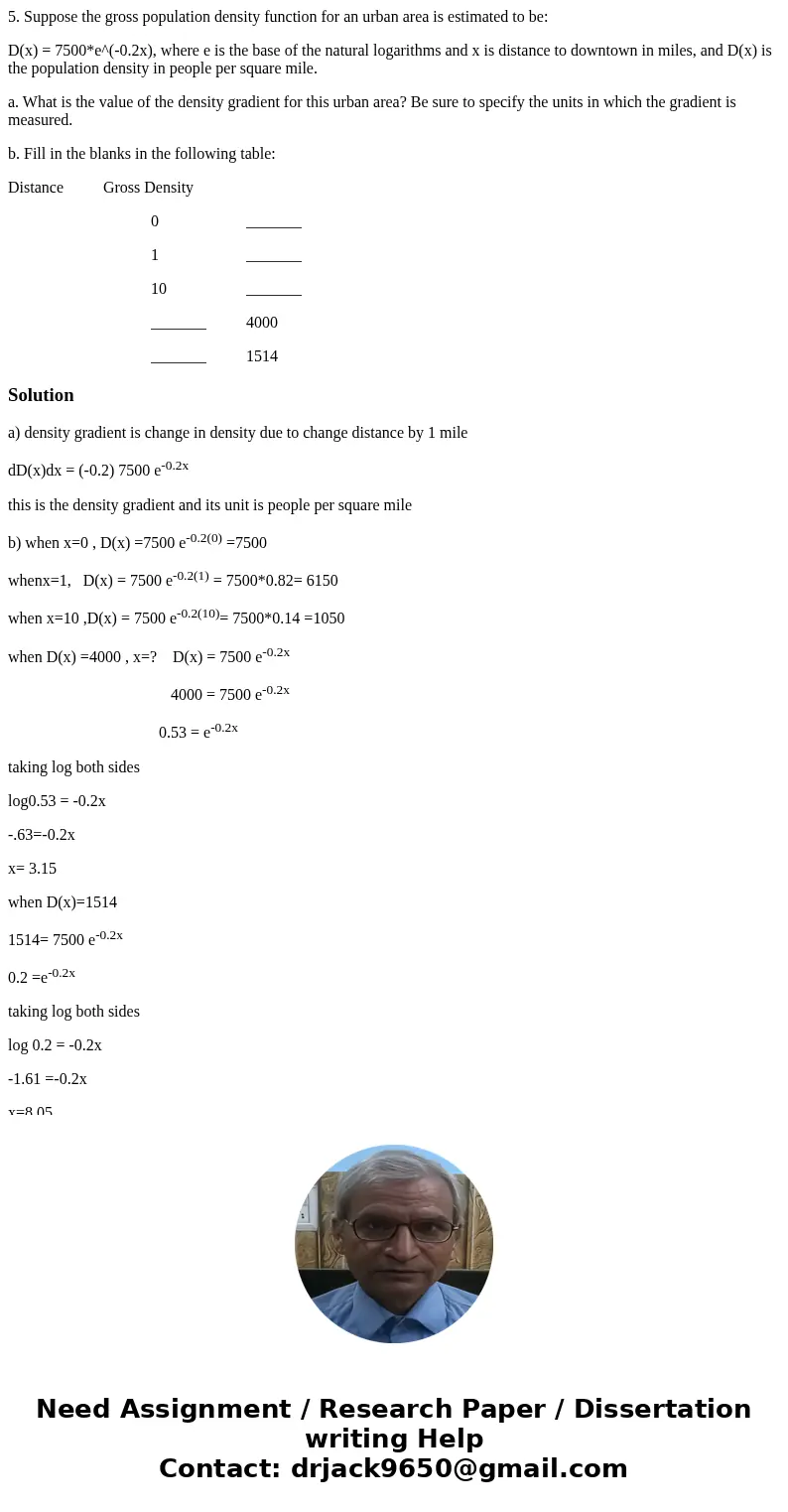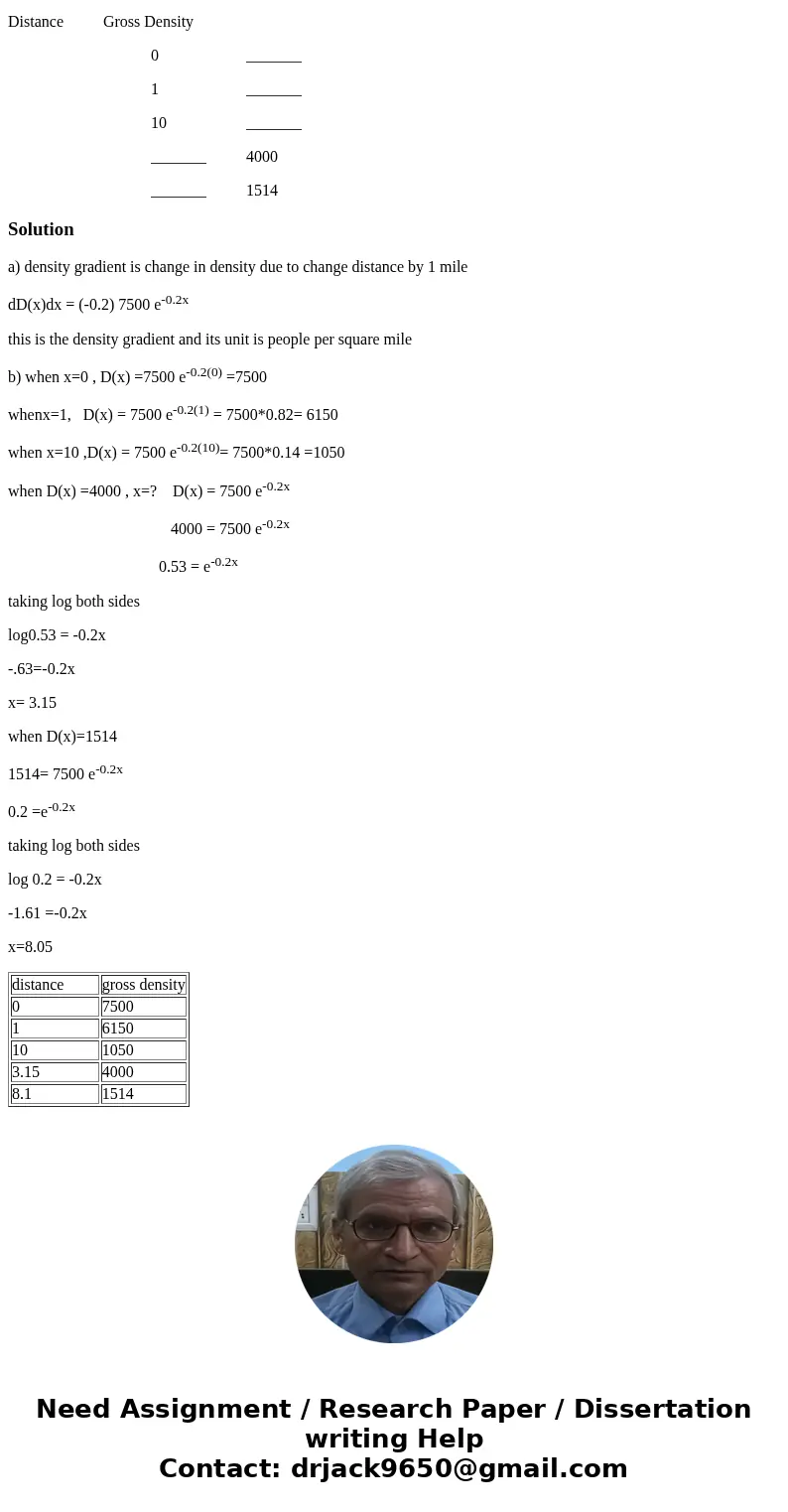5 Suppose the gross population density function for an urban
5. Suppose the gross population density function for an urban area is estimated to be:
D(x) = 7500*e^(-0.2x), where e is the base of the natural logarithms and x is distance to downtown in miles, and D(x) is the population density in people per square mile.
a. What is the value of the density gradient for this urban area? Be sure to specify the units in which the gradient is measured.
b. Fill in the blanks in the following table:
Distance Gross Density
0 _______
1 _______
10 _______
_______ 4000
_______ 1514
Solution
a) density gradient is change in density due to change distance by 1 mile
dD(x)dx = (-0.2) 7500 e-0.2x
this is the density gradient and its unit is people per square mile
b) when x=0 , D(x) =7500 e-0.2(0) =7500
whenx=1, D(x) = 7500 e-0.2(1) = 7500*0.82= 6150
when x=10 ,D(x) = 7500 e-0.2(10)= 7500*0.14 =1050
when D(x) =4000 , x=? D(x) = 7500 e-0.2x
4000 = 7500 e-0.2x
0.53 = e-0.2x
taking log both sides
log0.53 = -0.2x
-.63=-0.2x
x= 3.15
when D(x)=1514
1514= 7500 e-0.2x
0.2 =e-0.2x
taking log both sides
log 0.2 = -0.2x
-1.61 =-0.2x
x=8.05
| distance | gross density |
| 0 | 7500 |
| 1 | 6150 |
| 10 | 1050 |
| 3.15 | 4000 |
| 8.1 | 1514 |


 Homework Sourse
Homework Sourse